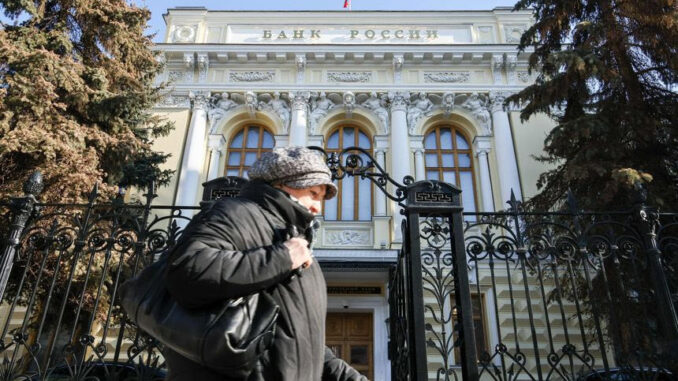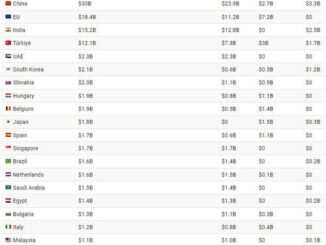
While American companies face little exposure to the impact of Russian sanctions, global energy markets may be more at risk
Western firms appear well insulated against the impact of the sanctions imposed this week on Russia. Whether global markets will fare as well isn’t yet clear.
Major U.S. stock indexes have been relatively resilient, with the S&P 500 and Nasdaq Composite both up at least 1.9% since Russia invaded Ukraine. Investors so far have been calm in the face of the conflict and many have used the opportunity offered by lower prices to buy. Data suggest that risks facing U.S. banks with exposure to the region are limited.
The good news, from the perspective of U.S. finance: The average stock portfolio is hardly exposed to Russian stocks, and U.S. companies have little reliance on Russian revenue. Western banks’ exposure to Russia, meanwhile, has dwindled since the 2014 annexation of Crimea.
The uncertain and potentially worrisome news: Global energy markets may be more exposed to the impact of sanctions than traders, portfolio managers and policy makers realized. Oil surged Tuesday to its highest level in more than seven years, reflecting in large part the pullback by Western traders from a range of firms they feared might be linked in any way to sanctions. A corresponding plunge in bond yields and bank shares suggests the economic impact in the U.S. could be significant, traders said.
To be sure, even the bad news in markets in New York has paled in comparison to what has happened in Europe. This week, the Russian ruble has fallen, while London-listed shares of many Russian companies have tumbled. Russia’s central bank closed stock trading for Monday and Tuesday to stem further turmoil. Even Tuesday when U.S. stock indexes tumbled, investors said trading was orderly.
Markets
A pre-markets primer packed with news, trends and ideas. Plus, up-to-the-minute market data.
“I don’t think there’s some kind of [market] plumbing issue that’s gumming up the works right now,” said Blake Gwinn, head of U.S. rates strategy at RBC Capital Markets. “Things are behaving pretty much like you’d expect.”
To be sure, potential risks for the U.S. and other Western markets have emerged. While still a smaller player on the world stage—Russia is the world’s 11th-largest economy—the country’s status as one of the largest suppliers of oil and natural gas keeps it solidly entangled with the rest of the globe. Rising oil prices could potentially exacerbate inflationary pressures in the U.S. and elsewhere. Brent-crude futures have risen 8.4% to $104.97 a barrel since the invasion.
Meanwhile, the risk of Russia retaliating to Western sanctions by choking off supply of its products continues to loom. Any impact to Europe could still trickle to the U.S. economy and cause pain ahead.
For now, though, strategists say, the growing disconnect between the economies of Russia and the West is providing reassurance to investors that portfolios can withstand financial fallout in the East.
“A well-diversified stock and bond portfolio is not going to be very exposed to Russia,” said Karin Anderson, director of fixed income manager research at Morningstar. “If you’re a passive index-fund investor or more focused on actively managed funds, you’re probably looking at exposure under 1%.”
Take, for example, target-date funds in the U.S., a popular choice for investors in 401(k) retirement funds. Target-date funds, which offer a mix of stocks and bonds and grow gradually more conservative over time, have little exposure to Russian stocks and bonds, Morningstar data show.
Around 0.5% of assets in target-date funds were in Russian stocks and just 0.2% were in Russian bonds as of the end of January, according to Jeffrey Ptak, chief ratings officer at Morningstar, based on an analysis of roughly $1.7 trillion sitting in U.S. target-date funds.



